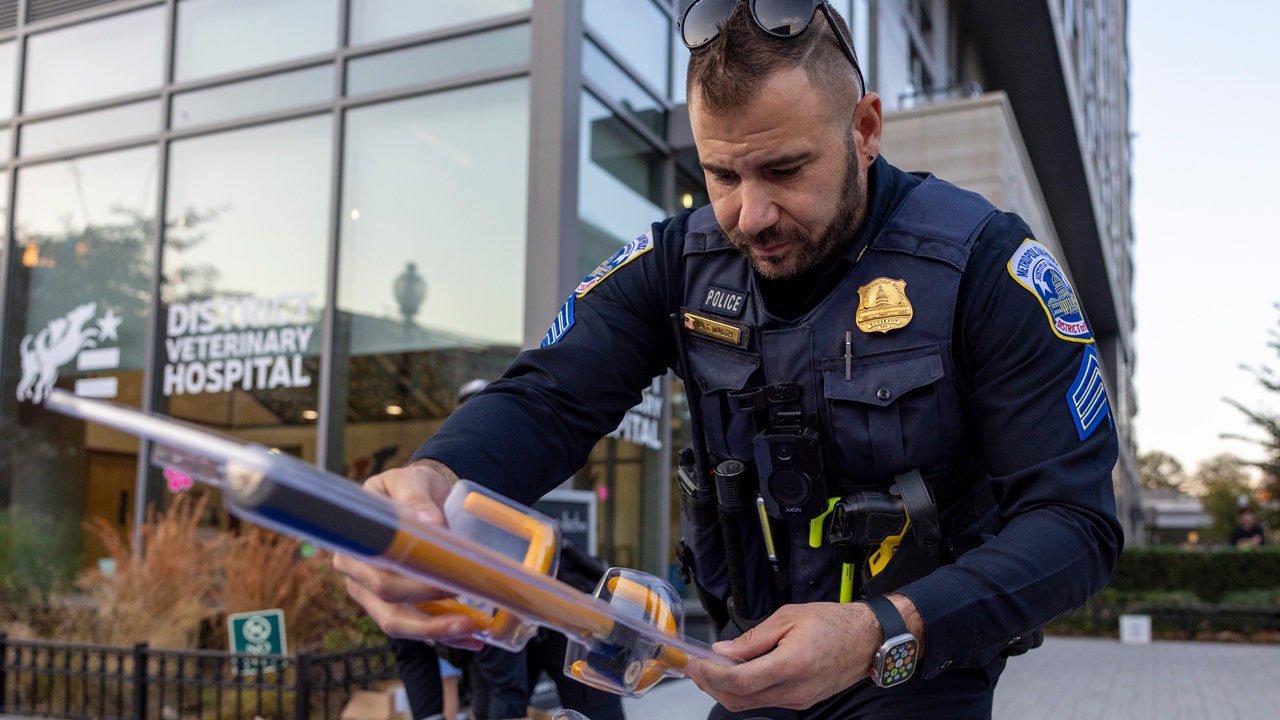Politics
Alabama lawmakers advance bill letting inmates speak at parole hearings
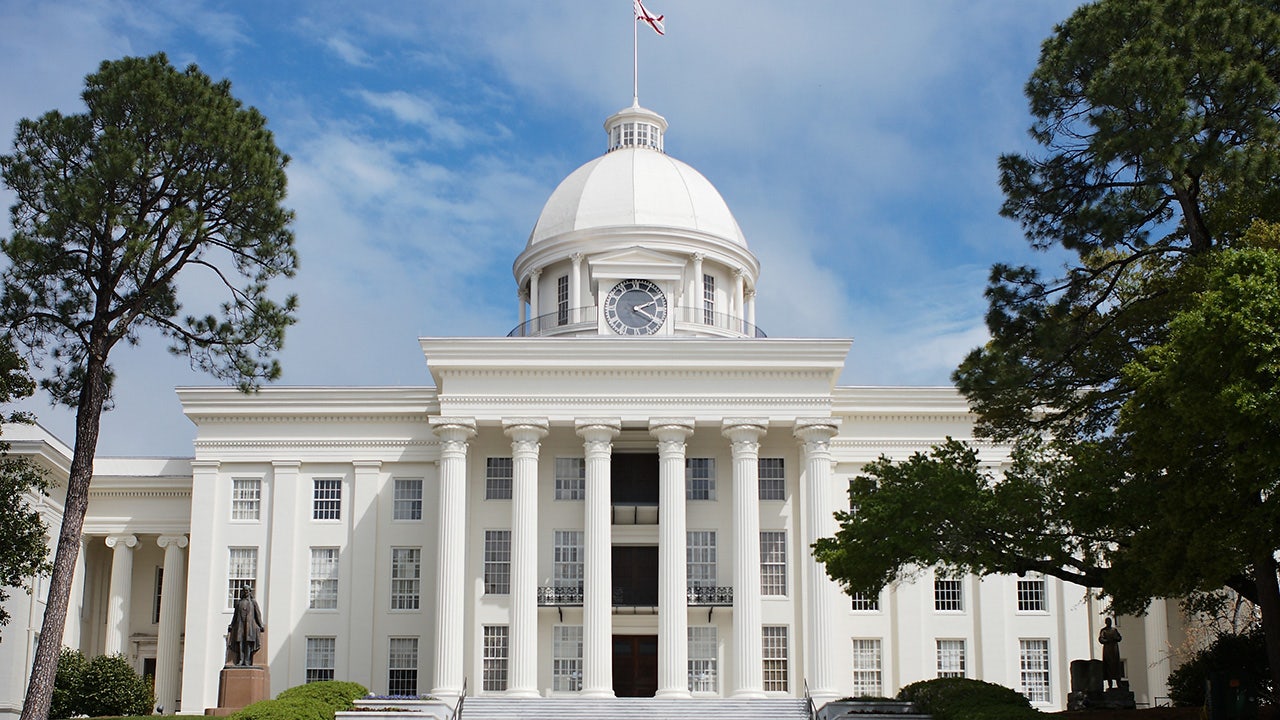
A legislative committee on Thursday advanced a bill to allow state inmates, for the first time, to speak by phone or video conference at their parole hearings.
The House Judiciary Committee approved the bill after adding an amendment to give victims and law enforcement officials the option to also participate by electronic means instead of driving to Montgomery for the parole hearing.
The bill, which was approved in the Senate without a dissenting vote, now moves to the Alabama House of Representatives to be considered in the final three days of the legislative session.
ALABAMA LAWMAKERS EYE GAMBLING COMPROMISE AS LEGISLATIVE SESSION NEARS ITS END
Alabama is one of two states that do not allow inmates to speak at parole hearings.
“SB 312 gives the incarcerated inmate the ability to participate in the hearing and more importantly, it gives the Parole Board another opportunity or an opportunity to question that inmate,” Republican Sen. Will Barfoot, the bill sponsor, said.
Exterior view of the Alabama State Capitol on March 22, 2020 in Montgomery, Alabama. (Taylor Hill/Getty Images)
The approval came after earlier disagreements over a proposal that would have weakened the bill by letting the Parole Board decide whether inmates could participate.
Wanda Miller, executive director of VOCAL, a victims advocacy group, said her organization opposes the bill because it believes the current system is adequate. Miller said victim advocacy groups had suggested the amendment to allow victims and law enforcement officials to also speak by phone or video conference.
Barfoot said that will make it easier for victims and law enforcement officials to participate in hearings instead of “driving sometimes three hours to sit through a 10- or 15-minute hearing.”
If approved, the measure would become effective on Oct. 1.

Politics
After Assembly issues apology for California's role in slavery, some reparations bills die in Senate
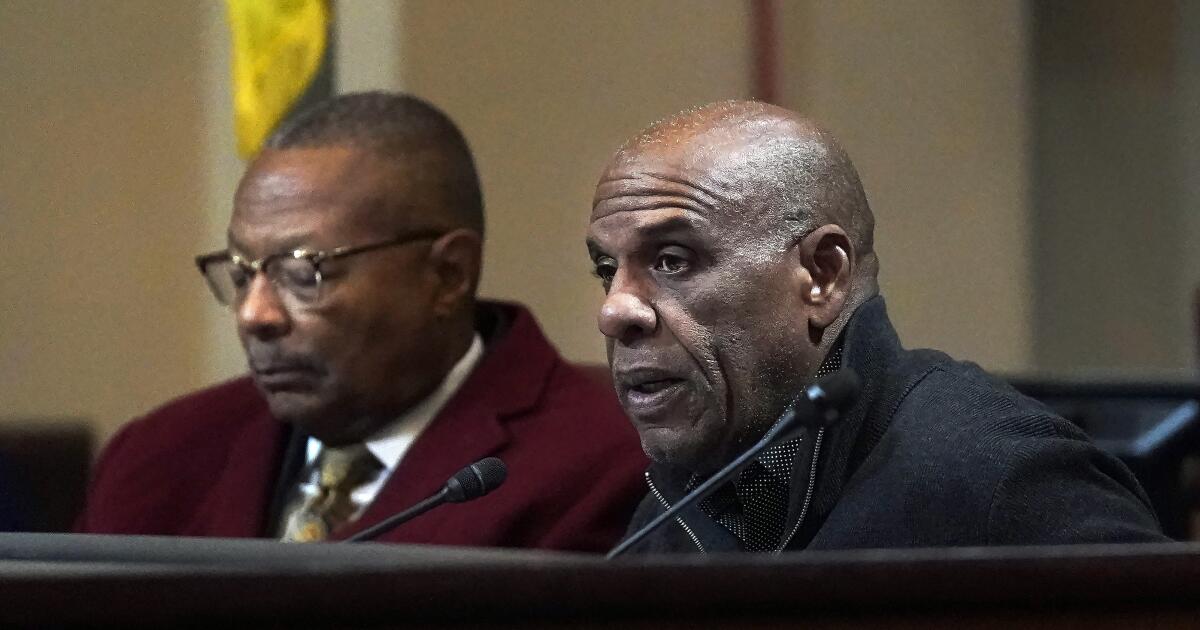
The California Assembly on Thursday voted to issue an official apology for the state’s role in slavery and the systemic racism that ensued, but other bills meant to offer reparations died shortly afterward in the Senate.
The apology is in a bill authored by Assemblymember Reggie Jones Sawyer (D-Los Angeles) that accepts responsibility for “all of the harms and atrocities committed by the state” and is part of a hard-fought legislative package for reparations for descendants of African Americans who were enslaved.
“Not only is the apology letter important, it’s what we do after — it’s whether or not we go ahead and fulfill the dream of what my ancestors wanted, which is to fully make us part of the American dream,” Jones-Sawyer said on the Assembly floor, receiving hugs and applause after the passage of AB 3089. The bill now moves to the Senate.
Less than an hour later, other reparations-related bills died in a key fiscal committee as the state grapples with a massive budget deficit.
Two bills by Sen. Steven Bradford (D-Gardena) were held back by the Senate Appropriations Committee. The legislation would have offered property tax credits and financial aid to purchase property to descendants of African Americans who were enslaved.
“We know we build generational wealth through home ownership, and African Americans have been denied home ownership since the Emancipation Proclamation. Their freedom, it was about land,” Bradford said in Sacramento on Thursday.
Bradford said he was disappointed but pointed to other reparations bills that survived Thursday’s “suspense file” process — the ritual culling of any legislation with a price tag that is sometimes used as a way for Democratic leaders who control the Legislature to eliminate controversial bills.
Bradford’s failed bills were not part of the primary reparations package promoted by the California Legislative Black Caucus, of which he is a member. Reparations advocates have been divided on the best success strategy after years of deliberation as they aim to create a first-in-the-nation plan to offer tangible benefits to descendants of the enslaved. The caucus has so far stopped short of calling for cash payments to those eligible — a priority of some Black advocacy groups but an idea that polling has shown is overwhelmingly unpopular with voters.
The Black Caucus’s core reparation bills are still moving through the legislative process, including proposals to limit solitary confinement in prisons and jails and compensate Californians for land taken by eminent domain.
Sen. Anna Caballero (D-Merced) chairs the Senate Appropriations Committee and pointed to the state’s financial problems as reason for the killing of Democratic-backed bills on Thursday.
“The next couple of years will be difficult for the legislative and budget processes,” she said. “Finding balance will be critical to ensure that we can continue to make our government work efficiently and prudently.”
Jones-Sawyer’s apology bill does not have a large price tag and is the first step for the Black Caucus as it pushes for the passage of the rest of its reparation legislation.
“It is undeniable that our systems of government have been complicit in the oppression of African Americans. … California’s history is tarnished by the subjugation of Black people,” Assembly Speaker Robert Rivas (D-Salinas) said in support of AB 3089 on Thursday. “It is a wound that still needs to heal.”
The bill saw unanimous support from Democrats, but several Republicans abstained from voting on it, including Assembly Republican Leader James Gallagher of Yuba City, who called slavery “a terrible stain on our history” but took issue with pieces of the bill that say the state is still denying Black residents some rights and that police shootings are “state-sanctioned violence.”
“We have made tremendous progress toward a more equal society,” Gallagher said in a statement.
Politics
Alaska lawmakers end their session with late bills passing on energy, education

Alaska lawmakers ended their four-month session early Thursday with a flurry of last-minute bills addressing priority issues such as energy and correspondence school programs that are a focus of ongoing litigation.
Bickering over the budget was muted compared with prior years, and Republican Gov. Mike Dunleavy and legislative leaders claimed successes in a session that was not without drama, marked by twofailed attempts to override Dunleavy vetoes of additional public school funding.
ALASKA LAWMAKERS FAIL TO OVERRIDE OF GOV. DUNLEAVY’S VETO OF EDUCATION PACKAGE
EDUCATION
Education was billed as a top priority, and lawmakers in the bipartisan-led Senate and Republican-led House overwhelmingly passed a compromise package that included a permanent $175 million increase in aid to districts through a school funding formula. But Dunleavy, who had sought charter school provisions and a three-year teacher bonus experiment that divided lawmakers, vetoed the measure.
A veto override attempt failed, along with efforts in the House to cobble together another package. Ultimately, lawmakers settled for pieces including a one-time, $175 million boost to the foundation formula in the budget and additional funding intended to help K-3 students with reading.
Last year, Dunleavy vetoed half of a one-time, $175 million boost to schools but has signaled willingness to support the increase in the just-passed budget.
Sen. Löki Tobin, a Democrat who chairs the Senate Education Committee, said work remained to address issues facing public schools, which “are still going to be struggling” because the funding approved is inadequate. School officials and education advocates had pushed for a roughly $360 million permanent increase in funding.
Tom Klaameyer, president of NEA-Alaska, a teachers’ union, said the Legislature’s failure to reinstate a pension offering for public employees also was disheartening. A pension bill narrowly passed the Senate but stalled in the House. Senate leaders said work would continue around retirement issues.
Late in session, lawmakers pivoted to correspondence schools, which allow for students to be homeschooled under the authority of school districts. That focus came after a judge found that laws around correspondence school allotments “were drafted with the express purpose of allowing purchases of private educational services with the public correspondence student allotments.” Under the state constitution, public funds cannot be paid “for the direct benefit of any religious or other private educational institution.”
Lawmakers passed a bill with provisions aimed at providing stability for correspondence students while the litigation plays out.
“The idea was to be able to give some peace and calm to the people out there, the 22,000 students, who weren’t sure what was going to happen,” House Speaker Cathy Tilton, a Republican, told reporters early Thursday.
UNDERGROUND CARBON STORAGE
The second of two bills proposed by Dunleavy as a way to capitalize on interest by companies with carbon emission reduction goals passed, allowing the state to establish a system and protocols for underground storage of carbon dioxide, with an eye toward using pore space in aging gas or oil fields, such as Cook Inlet or on the North Slope.
Lawmakers last year passed Dunleavy’s bill allowing the state to set up carbon sequestration projects or to lease state lands to a third party wanting to develop a carbon project. Draft regulations for the offsets program were released in March.
Dunleavy previously pitched the bills as a novel means for Alaska to generate perhaps billions of dollars in new revenue while still embracing fossil fuel production and other resource extraction, such as timber harvests and coal production. But the revenue impact of the proposals remains speculative.
To pay for government, the state relies heavily on oil revenue and earnings from its nest-egg, an oil-wealth fund that has grown through investments. Lawmakers have been reluctant to raise taxes on industries, like oil, and Alaska, with about 737,000 residents, has no statewide sales or personal income taxes.
Rebecca Noblin is the policy justice director with the group Native Movement. In written testimony this month on the underground carbon storage bill, she said the measure “would allow oil and gas companies and coal plants to inject carbon from their operations back into the ground” and will “increase pollution, cost the state money and distract from real solutions to climate change.”
ENERGY
The carbon bill, HB50, also included a provision supporters said could encourage more gas production in Cook Inlet. So-called reserve-based lending would allow for the issuance of loans made against and secured by an oil and gas field, proven reserves or other assets of the borrower. Under the bill, loans could be made by the Alaska Industrial Development and Export Authority, a state corporation, for projects it deems necessary to bolster production.
Residents in Alaska’s most populous region rely on gas from the aging Cook Inlet basin. But gas availability has become a concern and was a focal point this session. In February, Luke Saugier, senior vice president for Hilcorp Alaska, told lawmakers that while the company is “not pulling back” on investments in Cook Inlet and is committed to developing its leases, gas under its lease holdings can’t meet all the region’s gas demand. He said other sources of energy are needed.
Sen. Bill Wielechowski, an Anchorage Democrat, said the lending provision could unlock gas fields and end up being “one of the most important things that we have done this year.”
Dunleavy’s office also applauded passage of a separate measure that it says would streamline tax and tariff policies “to make new and existing electrical generation projects more affordable.”
“That in turn incentivizes independent power producers to move forward on renewable power projects like solar and wind farms along the Railbelt,” his office said in a statement.
DIVIDEND
The size of the annual dividend paid to residents has often been one of the major points of contention, contributing to drawn-out or special sessions. But there was little pushback this year, with lawmakers agreeing to a dividend of roughly $1,360 and an energy relief payment of $295.
Legislative leaders pointed to better communication and a balancing of priorities, including what Republican Rep. DeLena Johnson, a House Finance co-chair, called a “solid” state infrastructure budget.
Politics
Newsom administration unveils new $20-billion cost estimate for delta water tunnel
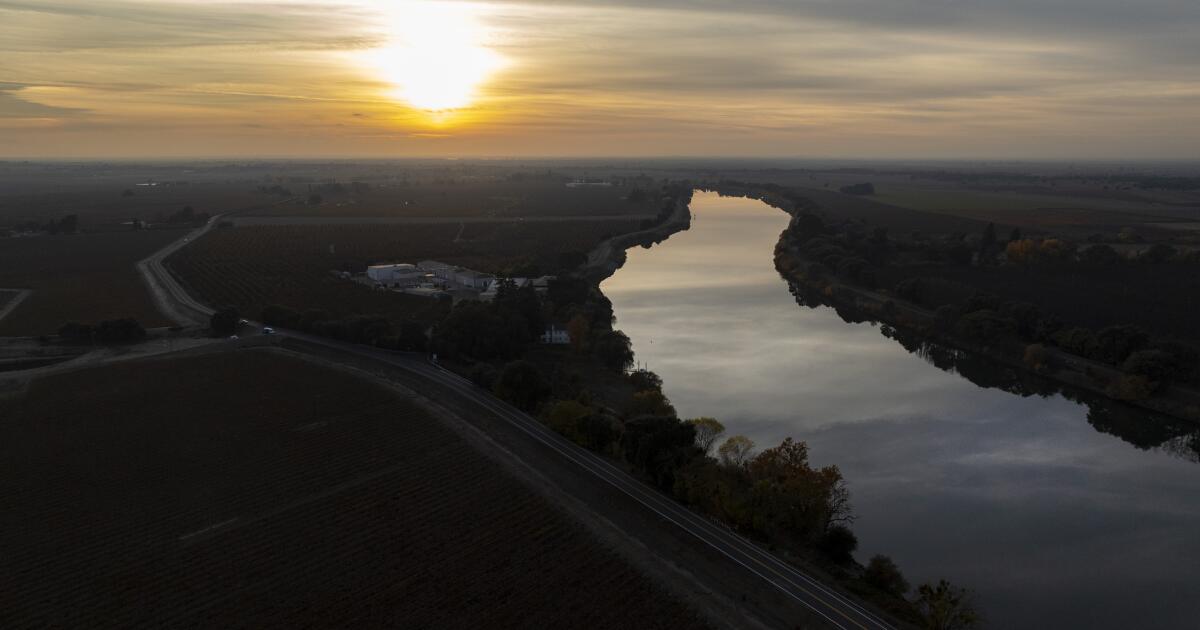
Gov. Gavin Newsom’s administration announced that the estimated cost of building a tunnel to transport water beneath the Sacramento-San Joaquin River Delta has risen to $20.1 billion.
The estimate is part of a new cost-benefit analysis by the California Department of Water Resources, which concluded that the projected benefits of constructing the water tunnel would far outweigh the costs.
State officials released the analysis Thursday, saying the proposed Delta Conveyance Project is vital to improving the reliability of water supplies in the face of climate change, sea level rise and the risks of an earthquake that could put existing infrastructure out of commission for months.
The state estimates that the project’s benefits would total nearly $38 billion by offsetting steep reductions in water deliveries due to existing infrastructure limitations and climate change.
A gull flies above McLeod Lake in Stockton.
(Brian van der Brug/Los Angeles Times)
“The project easily passes a benefit-cost test,” said David Sunding, a UC Berkeley emeritus professor who led the analysis as a consultant for the state. “The benefits clearly justify the costs.”
The last time the state produced an estimate, in 2020, the price tag came to $16 billion. The cost increase, Sunding said, is almost entirely due to inflation. The projected benefits also increased.
The cost analysis is the state’s latest step toward building the 45-mile tunnel, which would create a second route to draw water from the Sacramento River into the aqueducts of the State Water Project.
Newsom says the project is critical for California’s future, but opponents argue it is a costly boondoggle that would harm the delta and further imperil its ecosystem.
Environmental groups, Indigenous tribes, fishing organizations and local agencies have filed lawsuits seeking to block the project.
This week, dozens of groups filed protests with the State Water Resources Control Board challenging a state petition to change its “point of diversion” in the delta — one of the steps necessary to move forward with construction.
The State Water Project supplies 27 million people and about 750,000 acres of farmland — fueling a $2.3-trillion portion of the state’s economy.
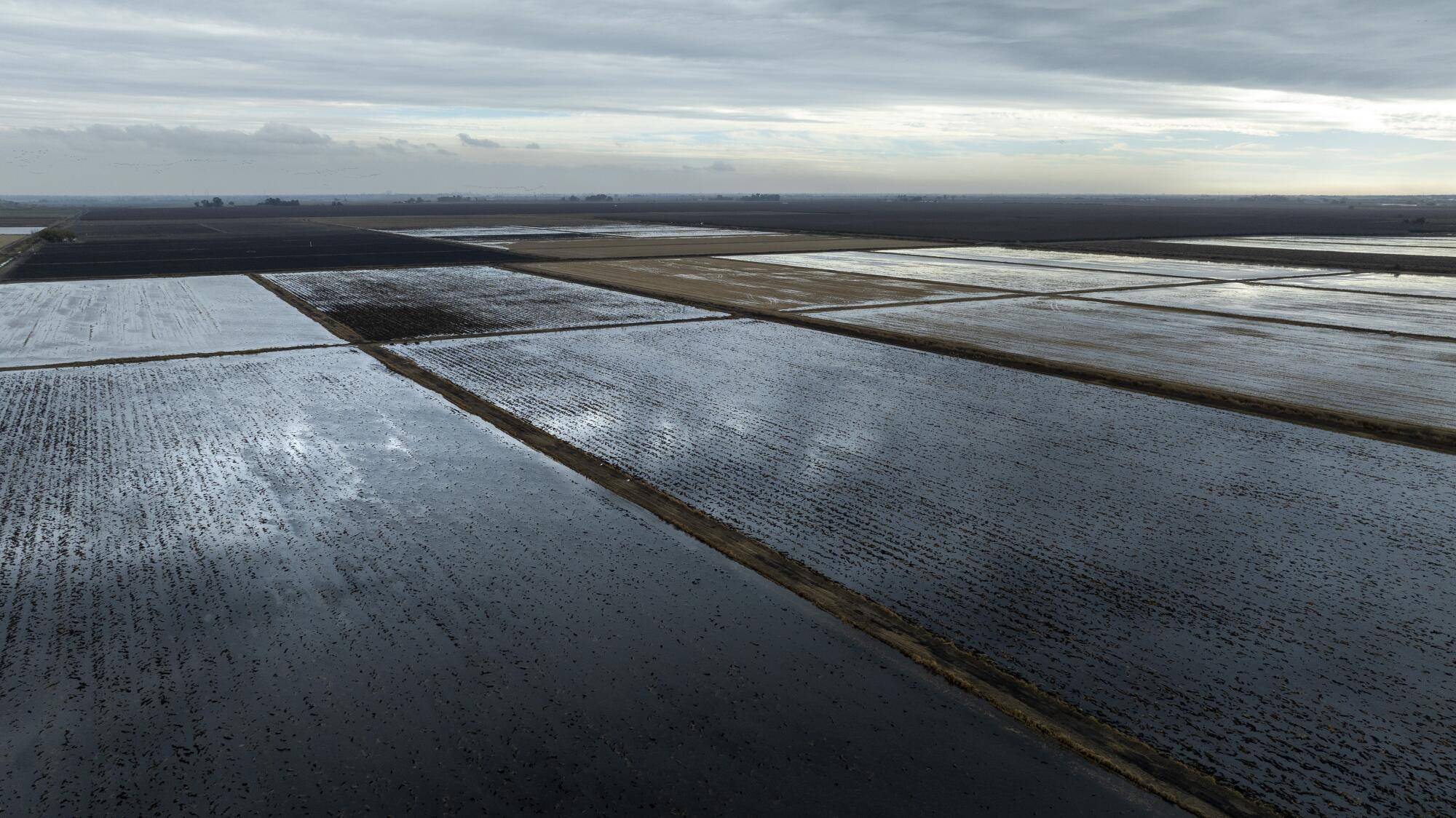
Flooded rice fields along the San Joaquin River in Stockton.
(Brian van der Brug/Los Angeles Times)
But state officials say the state’s existing pumping infrastructure in the south delta, which draws water into the California Aqueduct, is vulnerable to the more intense extremes driven by climate change, as well as sea level rise.

Aggressive and impactful reporting on climate change, the environment, health and science.
They estimate that if the state relies on its current infrastructure, there would likely be a 22% reduction in water deliveries by 2070. However, construction of the tunnel would boost supplies by an estimated 400,000 acre-feet annually, compared to the “no project” alternative.
The estimates included an analysis of impacts from sea level rise — using scenarios of a 1.8 feet or 3.5 feet rise by 2070 — which would bring increasing risks of delta levees failing or being overtopped, and higher salinity water encroaching on existing infrastructure.
State officials also analyzed the risk that a major earthquake would pose to the existing infrastructure, which they say could disrupt deliveries of supplies for months. Sunding said the tunnel would have a “superior ability” to withstand earthquakes and would make the state’s system less vulnerable.
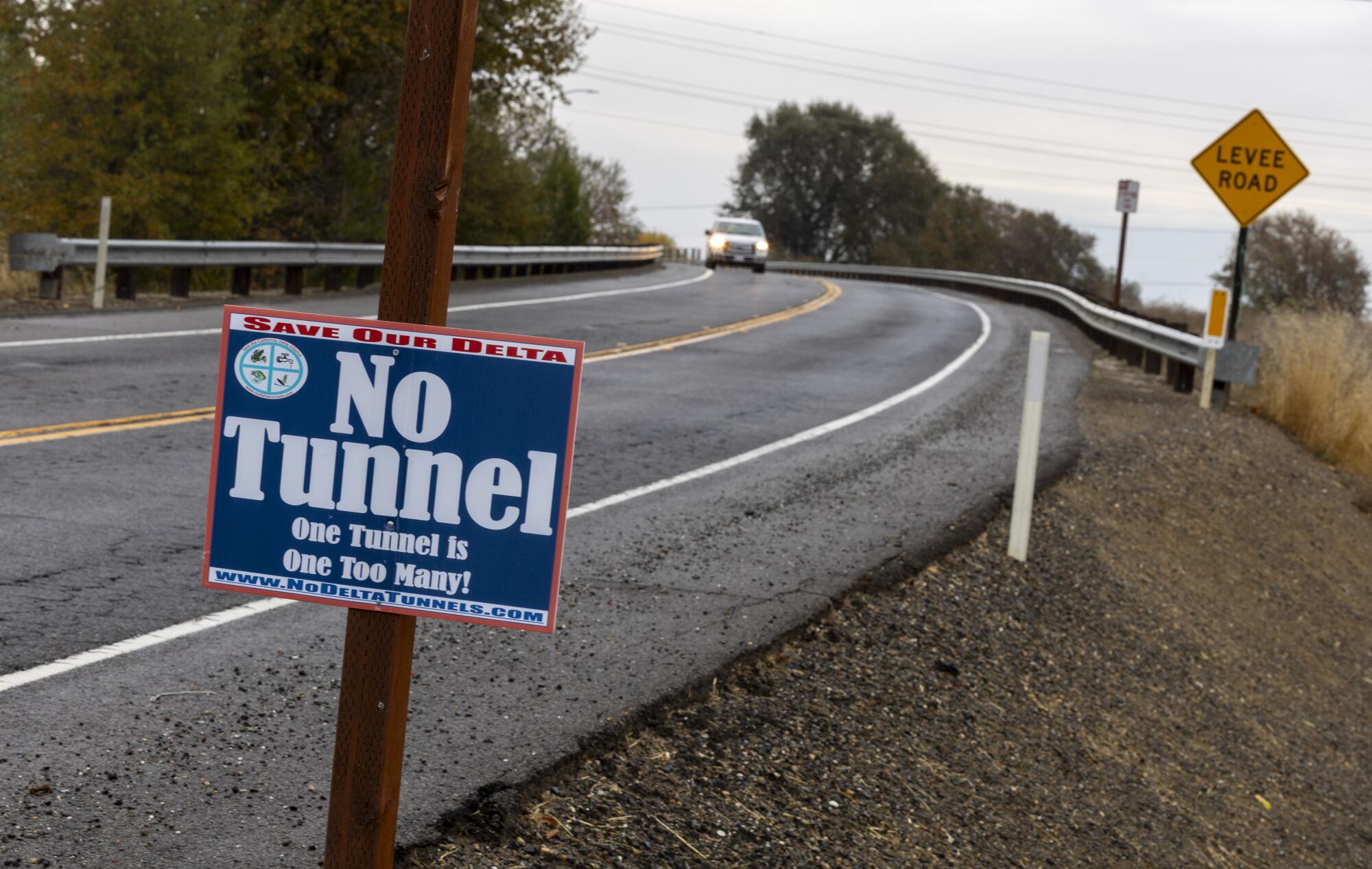
A sign of opposition to the Delta Conveyance Project along a levee road near the Sacramento River in Hood.
(Brian van der Brug/Los Angeles Times)
“I get a lump in my throat when I look at the potential for a catastrophic failure in the delta,” said Karla Nemeth, director of the state Department of Water Resources. “This is a project that just provides enormous value to the broad California economy.”
Nemeth said the analysis shows that doing nothing would mean substantial costs for the state through frequent water shortages, mandatory restrictions in cities, and reductions in agricultural supplies that would force farmers to leave fields dry and fallow.
“It is vastly more efficient and economical to avoid declining supplies,” Nemeth said.
The costs of the project would be paid for by urban and agricultural water districts that decide to participate.
The state’s cost-benefit analysis is intended to provide information that local water agencies, such as the Metropolitan Water District of Southern California, will consider.
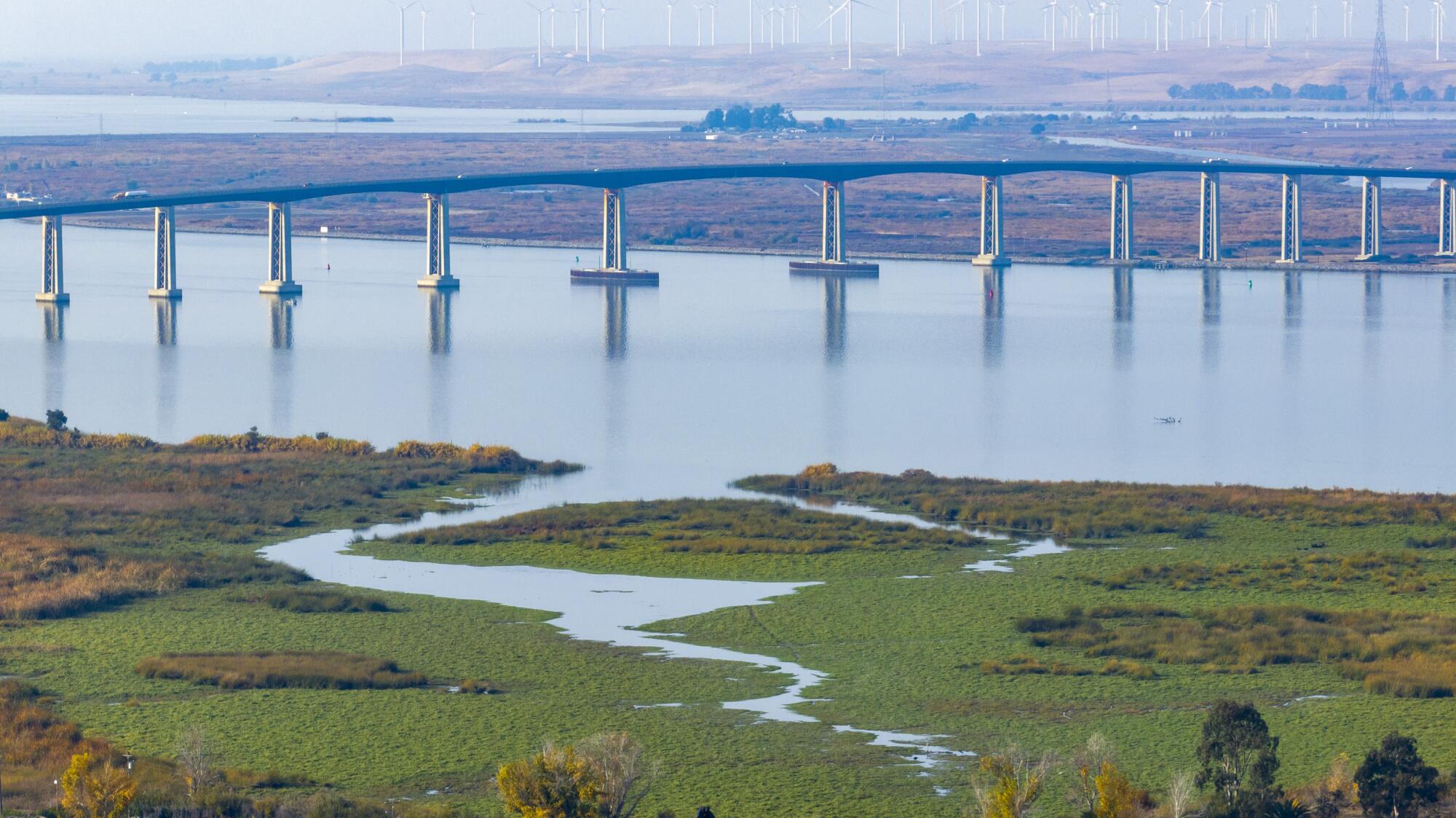
The Antioch Bridge over the San Joaquin River.
(Brian van der Brug/Los Angeles Times)
In preparing the updated cost estimate, the Delta Conveyance Design and Construction Authority examined potential “design and construction innovations” that could reduce the overall costs by about $1.2 billion.
Currently, about 56% of water deliveries from the State Water Project supply urban areas, while nearly 44% go to agriculture.
The analysis projects that with the tunnel, California would have fewer periods of mandatory water rationing and also less severe rationing, Sunding said. The project “helps to preserve the supplies that would otherwise be eroded through climate change,” he said.
State officials also compared the costs of additional supplies from the tunnel, at $1,325 per acre-foot, to the costs of additional supplies through investments in desalination, wastewater recycling, stormwater capture and conservation.
Sunding said they found the median costs of these other types of investments would be higher, with the exception of conservation, which is “in the same ballpark” with the project.
“But it is important to note that we’ve done a lot of water conservation in the state, particularly in Southern California and some parts of the Bay Area, and a lot of the cheapest water conservation projects have already been done,” Sunding said. “So there are limits to how much more water conservation there can be.”
However, other experts say California still has a great deal of potential to continue reducing water use through conservation. Researchers with the Pacific Institute, a water think tank, found in a 2022 study that the state could reduce water use by more than 30% in cities and suburbs by investing in measures to use water more efficiently.
Opponents of the tunnel project have argued the state should instead invest in other approaches in the delta, such as shoring up levees and restoring natural floodplains to reduce flood risks, while changing water management to protect the estuary’s health.

An angler casts into Bethany Reservoir in Byron.
(Brian van der Brug/Los Angeles Times)
Fish populations have suffered declines in recent years, and environmentalists say the tunnel would cause additional ecological harm.
State officials say the tunnel would lessen limitations on water deliveries linked to fish protections at the state’s existing pumping facilities in the south delta.
They point to this year as an example. Despite a wet winter and ample river flows, a rise in the deaths of steelhead trout and other fish in areas around the pumps forced reductions in pumping.
The Department of Water Resources said that if the delta tunnel had been in operation this year, an additional 909,000 acre-feet of water could have been delivered from intakes in the north delta, helping to resolve what officials described as “difficult conflicts” in the south delta.
“The status quo is not an option going forward. It’s just not something that can be maintained,” Sunding said. “One way or another, the system is going to change. Climate change is going to have its impact.”
-

 Politics1 week ago
Politics1 week ago'You need to stop': Gov. Noem lashes out during heated interview over book anecdote about killing dog
-

 News1 week ago
News1 week agoMan, 75, confesses to killing wife in hospital because he couldn’t afford her care, court documents say
-

 Politics1 week ago
Politics1 week agoRFK Jr said a worm ate part of his brain and died in his head
-

 World1 week ago
World1 week agoPentagon chief confirms US pause on weapons shipment to Israel
-

 Politics1 week ago
Politics1 week agoHere's what GOP rebels want from Johnson amid threats to oust him from speakership
-

 World1 week ago
World1 week agoPro-Palestine protests: How some universities reached deals with students
-

 World1 week ago
World1 week agoConvicted MEP's expense claims must be published: EU court
-

 Politics1 week ago
Politics1 week agoCalifornia Gov Gavin Newsom roasted over video promoting state's ‘record’ tourism: ‘Smoke and mirrors’

